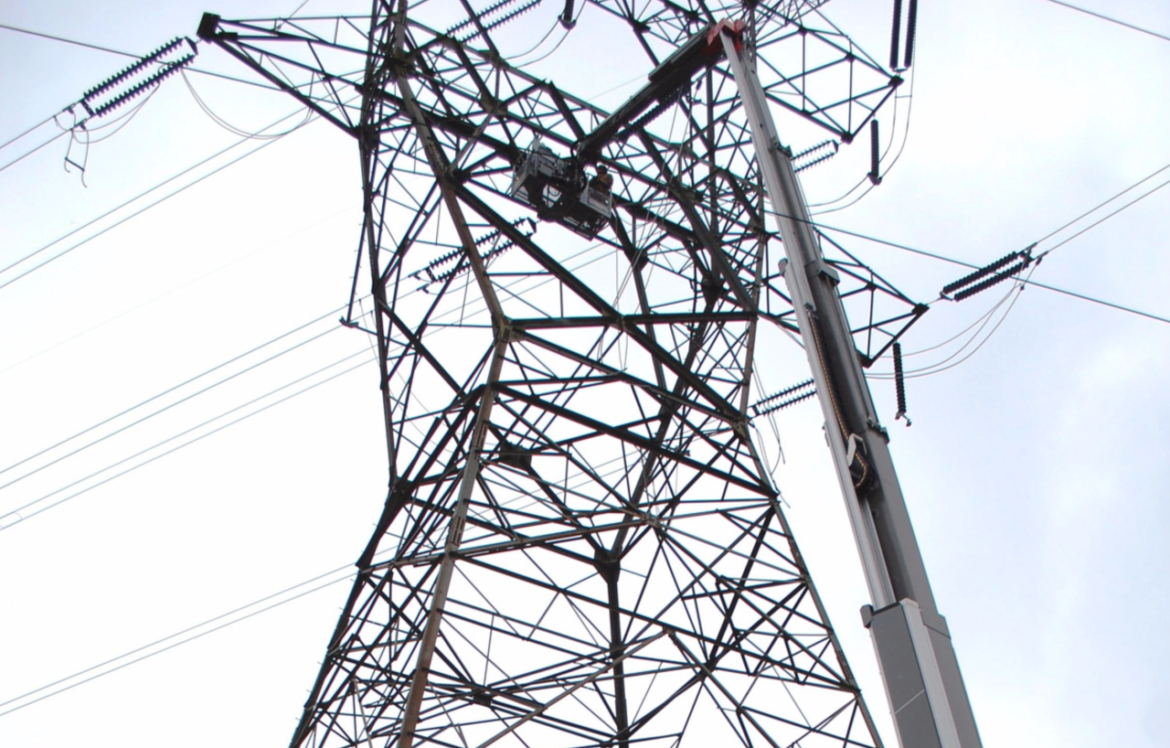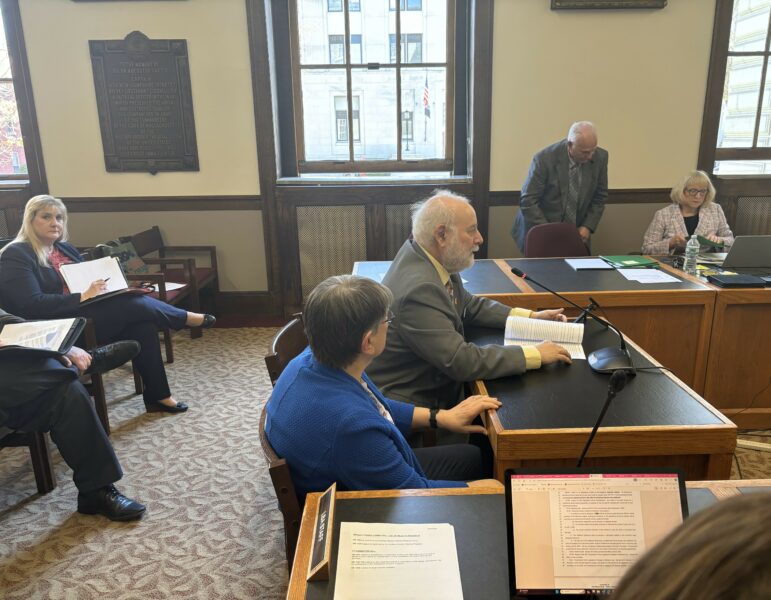Power to the People is a column by D. Maurice Kreis, New Hampshire’s Consumer Advocate. Kreis and his staff of four represent the interests of residential utility customers before the NH Public Utilities Commission and elsewhere. It is co-published by Manchester Ink Link and InDepthNH.org.
By D. Maurice Kreis, Power to the People
Halloween is here, but I’m still spooked by Labor Day.
You may recall that September 3, 2018 was a notably balmy holiday with which to mark the unofficial end of summer. The mercury hit 94 degrees Fahrenheit in Concord. The Red Sox were in Atlanta, beating the Braves 8-2; the temperature down there was some ten degrees cooler than in New England.
But another bit of data from Labor Day was truly scary.
As late afternoon set in, the wholesale price of a megawatt-hour of electricity in New Hampshire soared beyond $2,700. Talk about a witching hour!
To put that in perspective: Retail electricity is usually priced in cents per kilowatt-hour. A wholesale price of $2,716.20 – which is where things stood in New Hampshire at 20 minutes to 6:00 on Labor Day – translates to $2.72 per kilowatt-hour.

D. Maurice Kreis, NH Consumer Advocate
If that were the actual price paid for electricity by residential utility customers in New Hampshire, your electric bill would be north of $1,700 a month. And that’s just the energy charge; it doesn’t include the monthly fixed customer charge, or the usage charges you pay for transmission and distribution (i.e., the poles and wires).
Fortunately, wholesale price spikes are not passed directly on to New Hampshire’s retail customers. Indeed, relatively few wholesale buyers of electricity (consisting of utilities and non-utility, competitive electric suppliers) paid those prices. Most of the region’s wholesale electricity is bought and sold a day in advance.
But that doesn’t mean the Labor Day price spike was just the equivalent of a Halloween Haunted House, where the ghouls and ghosts are just pretend. These price spikes will have an effect on future retail electricity prices in New Hampshire. Competitive energy suppliers will factor them into the rates they offer. So will the companies that bid on the opportunity to provide default energy service to our utilities for customers who are not using competitive suppliers.
Moreover, the late-afternoon events of Labor Day might suggest that something might be wrong with the way we have designed wholesale electricity markets. This is a problem because restructuring the electric industry, at wholesale and retail, was supposed to be great for consumers.
Part of your electricity bill goes toward so-called capacity costs. Every entity in New England responsible for serving retail load must purchase a completely fictional product known as “capacity.” Basically, we pay generators just to show up regardless of whether they are needed.
A wholesale “capacity” market is supposed to provide what is commonly referred to by industry insiders as the “missing money.” This is money that generators would supposedly receive via the wholesale market in actual electricity, if only we would let prices soar toward infinity in times of scarcity.
According to textbook microeconomics, high prices in such conditions are what attract new suppliers into the marketplace. We needed a capacity market to do that job because, it was claimed, prices in the electricity market are constrained. Money is therefore missing from the market.
It’s true that market rules prohibit generators from bidding more than $1,000 per megawatt-hour in either the real-time or day-ahead market. So how did prices get to $2,716.20 at barbeque time on Labor Day?
Blame the reserve requirement.
Because ISO New England’s job is to keep the bulk power system from crashing, it requires a specified amount of generation to be available in reserve. When there is not enough reserve power available, something called the “reserve constraint penalty factor” kicks in.
Not enough 30-minute reserve – i.e., generation that can come on line with 30 minutes’ notice? Add another $1,000 to the price. Likewise, not enough ten-minute reserve? That’s a penalty of $1,500.
In other words, the market price of wholesale electricity in New Hampshire at 5:40 p.m. on Labor Day, based solely on the bid of the most expensive generator needed to meet actual demand, was $216.20 – by itself a whopping big number. But the price then went up by an order of magnitude because of penalties associated with inadequate reserves.
More annoying than scary is the fact that most of the fault for incurring this penalty lies with ISO New England itself. The grid operator underestimated the region’s peak demand by more than 2,000 megawatts. This meant not enough power was scheduled via Sunday’s bidding in the day-ahead market to come on line at the witching hour on Labor Day afternoon.
The ISO was quick to blame inaccurate weather forecasts. Fair enough, but occasions when prices spike in real time because not enough power clears in the day-ahead market seem to be proliferating.
And you can’t just blame the weather. Something else happened on Labor Day – a development worthy of a Stephen King novel.
According to the trade publication Utility Dive, at around 3:30 p.m. on Labor Day there was a power failure at the Distrigas liquefied natural gas (LNG) terminal in Everett, just north of Boston. Right next door is the region’s biggest power plant – the 1,700 megawatt Mystic Generating Station – which relies on Distrigas for fuel.
In fact, because Mystic Station relies on the LNG terminal, which gets its fuel by boat from scary places like Russia, rather than the interstate natural gas pipeline network, which gets its fuel via scary technologies like hydraulic fracturing, ISO New England has decided Mystic Station is essential to the region’s grid for reasons of “fuel security.” So the grid operator and Mystic Station’s owner, the monstrously big energy conglomerate Exelon, are in the midst of convincing federal regulators to provide guaranteed cost recovery for Mystic Station.
The claimed reliability of Mystic Station’s fuel sources notwithstanding, the Labor Day power failure at Distrigas knocked most of Mystic Station’s capacity off line that afternoon – just when the grid needed it most. Kudos to reporter Gavin Bade of Utility Dive for unearthing that particular factoid from the dark crypt of semi-secret ISO New England operational data.
As with many examples of the horror genre, this particular story ends happily. Yeah, wholesale prices throughout New England spiked spookily on Labor Day when Mystic Station had to curtail its output and the weather turned out to be ten degrees hotter than planned. But the lights stayed on.
The lingering question, as always, is whether consumers are paying too much for this wholesale electricity drama. Whenever the big companies that dominate the region’s electricity grid talk about “missing money,” consumers should be afraid for their wallets.





